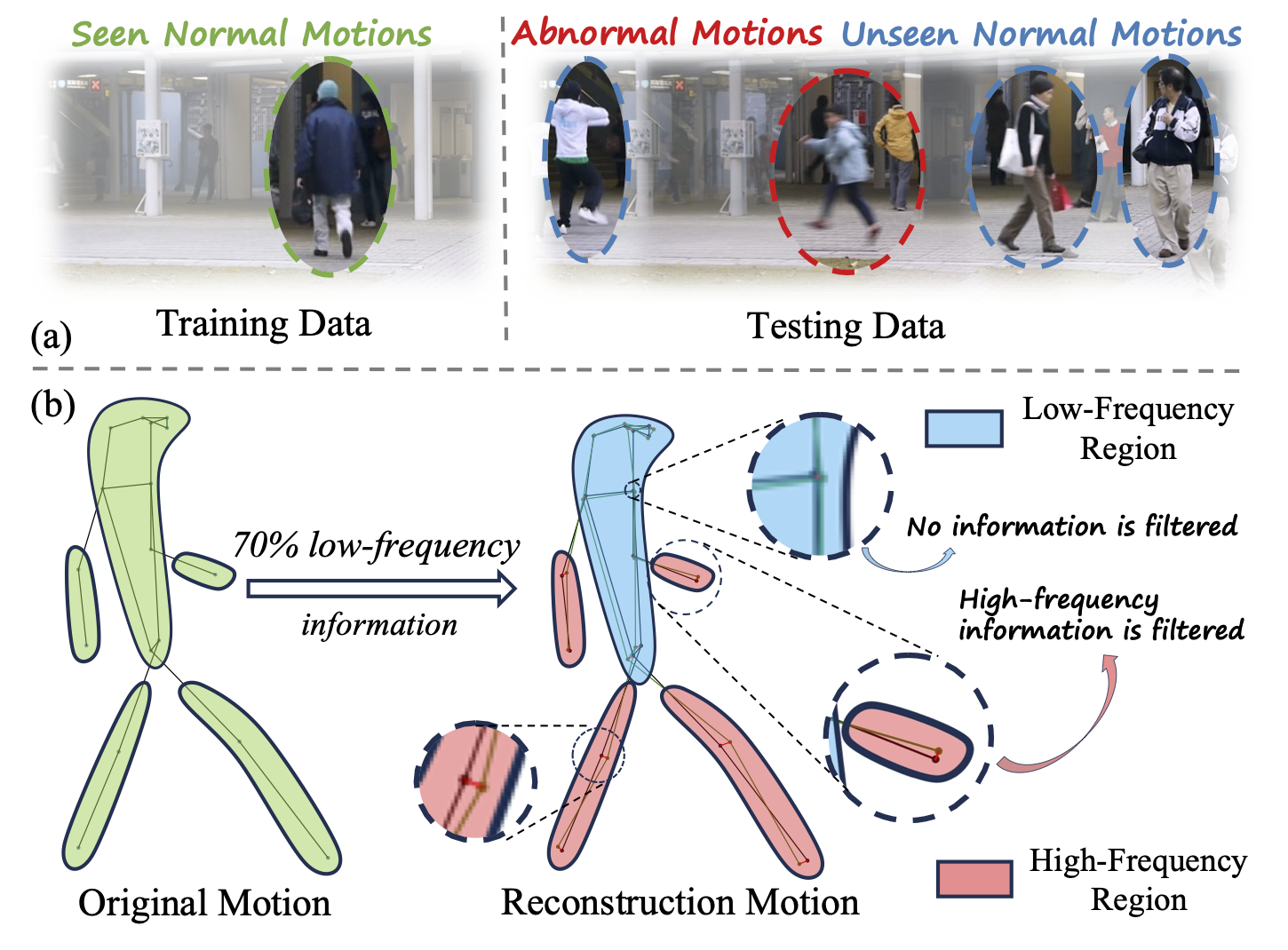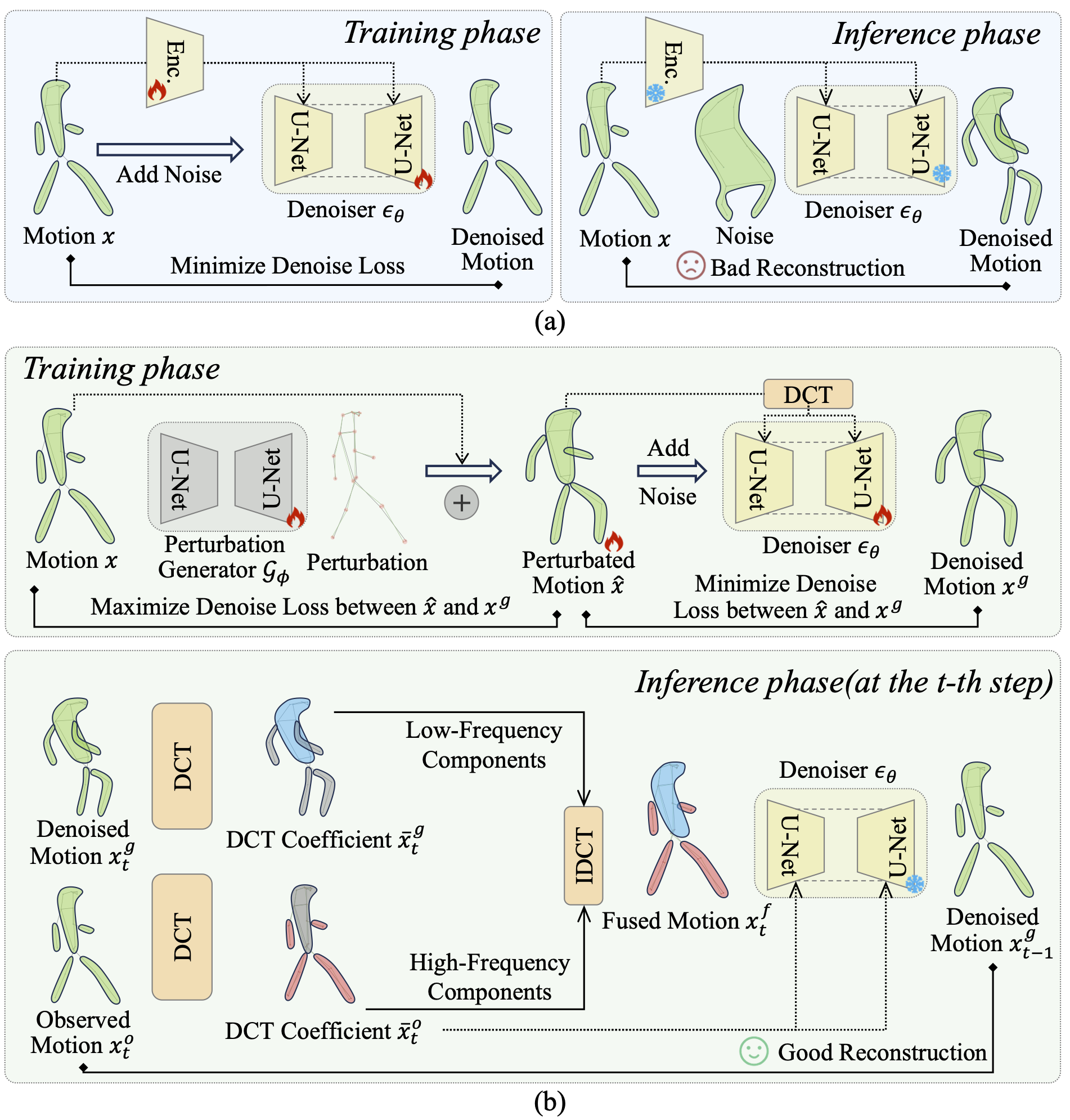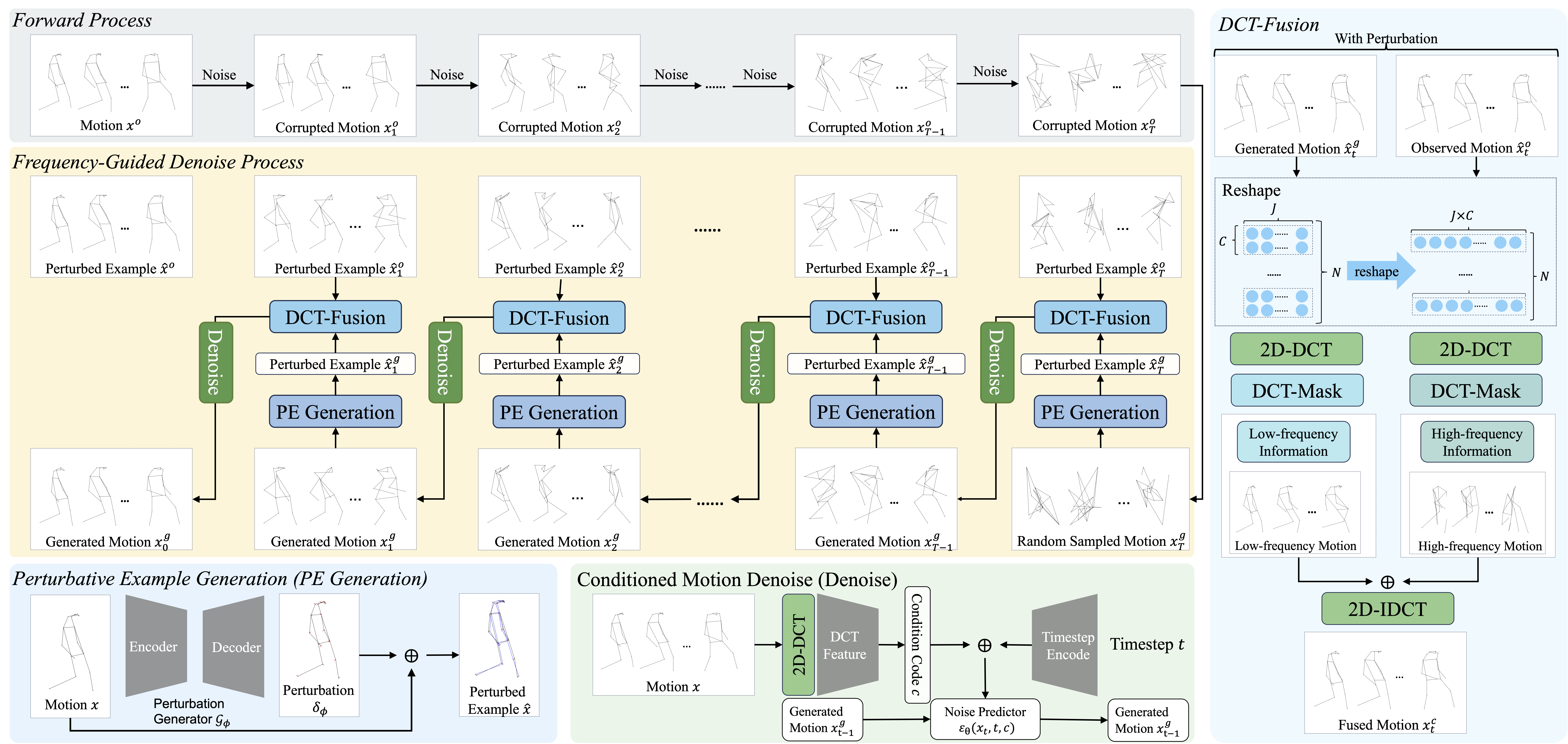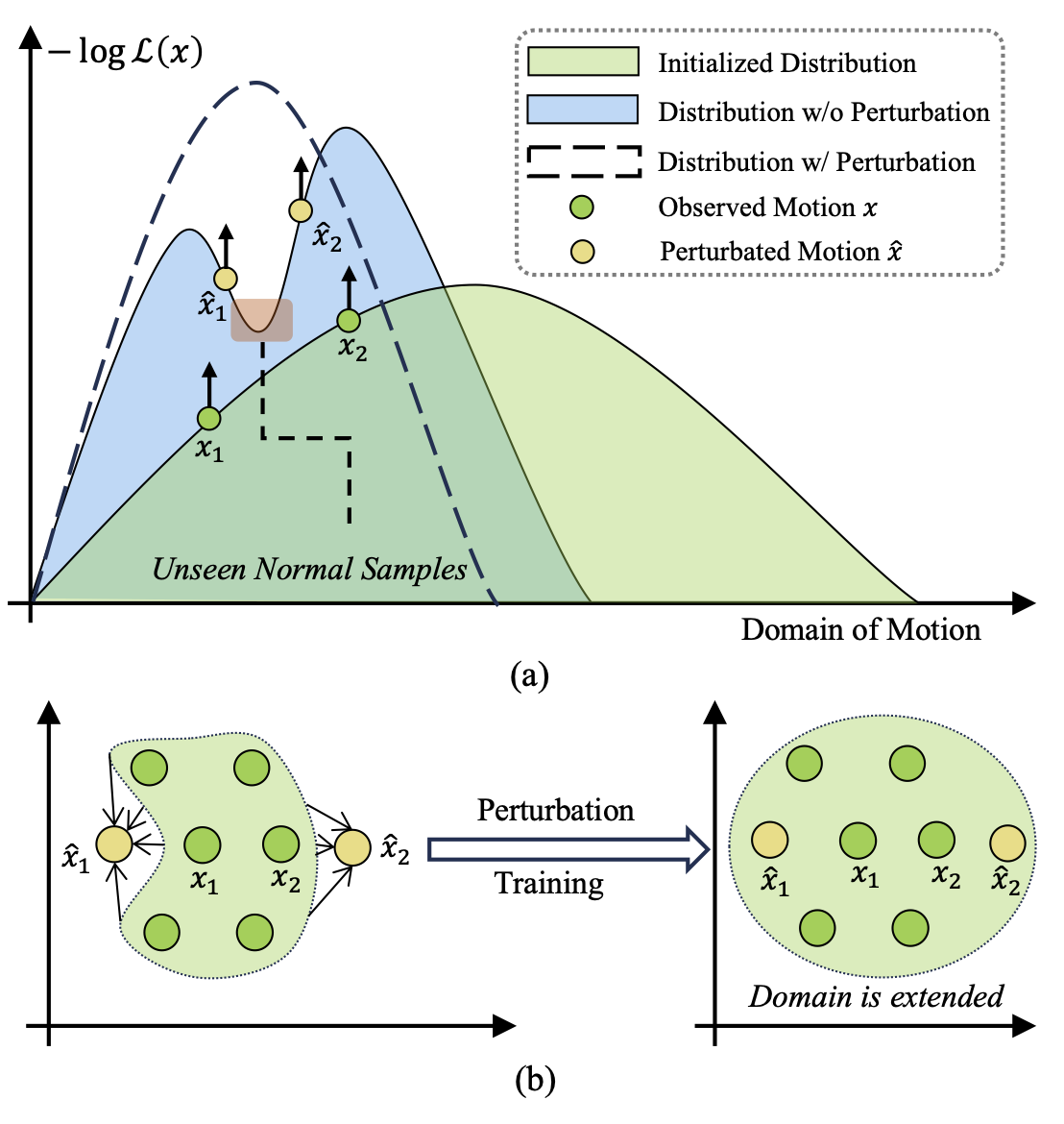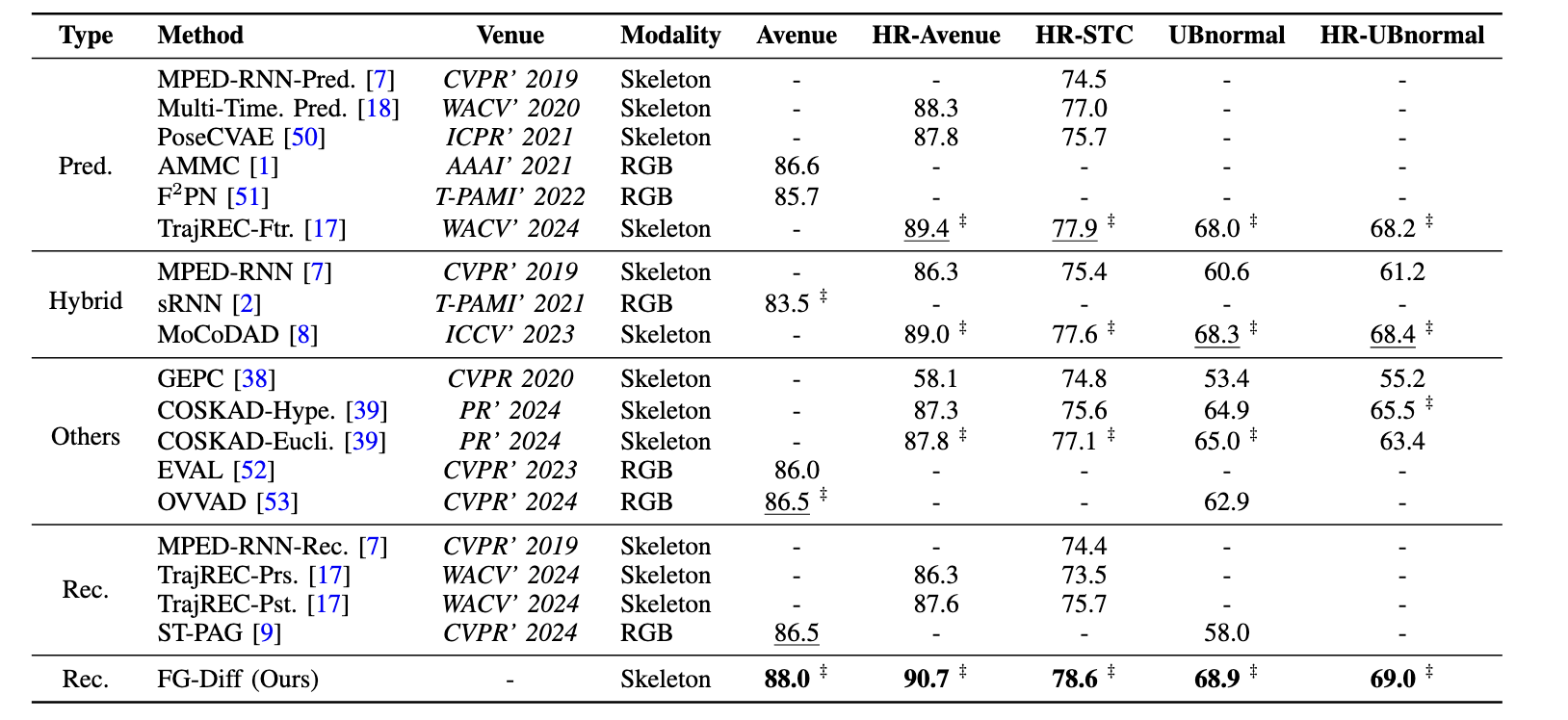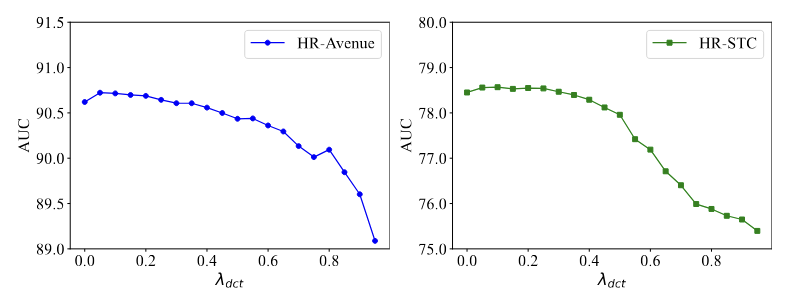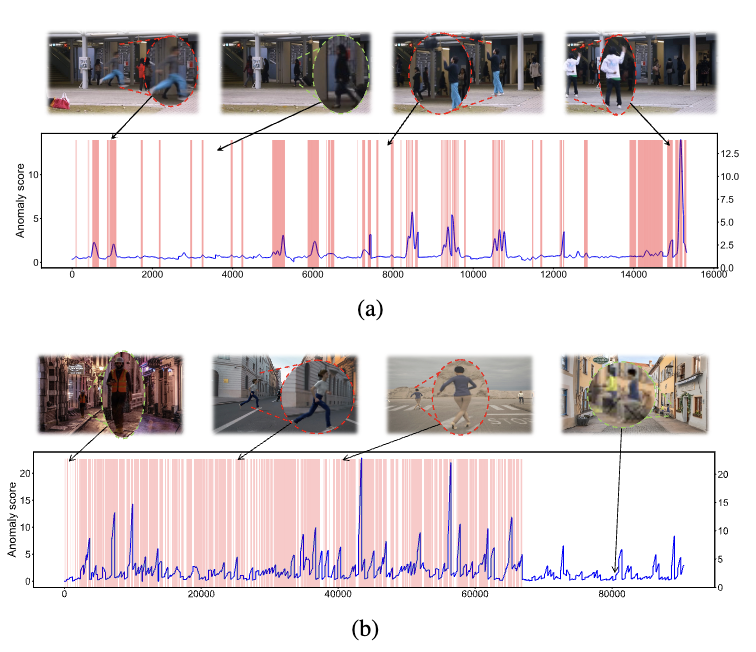Video anomaly detection (VAD) is a vital yet complex open-set task in computer vision, commonly tackled through reconstruction-based methods. However, these methods struggle with two key limitations: (1) insufficient robustness in open-set scenarios, where unseen normal motions are frequently misclassified as anomalies, and (2) an overemphasis on, but restricted capacity for, local motion reconstruction, which are inherently difficult to capture accurately due to their diversity. To overcome these challenges, we introduce a novel frequency-guided diffusion model with perturbation training. First, we enhance robustness by training a generator to produce perturbed samples, which are similar to normal samples and target the weakness of the reconstruction model. This training paradigm expands the reconstruction domain of the model, improving its generalization to unseen normal motions. Second, to address the overemphasis on motion details, we employ the 2D Discrete Cosine Transform (DCT) to separate high-frequency (local) and low-frequency (global) motion components. By guiding the diffusion model with observed high-frequency information, we prioritize the reconstruction of low-frequency components, enabling more accurate and robust anomaly detection. Extensive experiments on five widely used VAD datasets demonstrate that our approach surpasses state-of-the-art methods, underscoring its effectiveness in open-set scenarios and diverse motion contexts.
